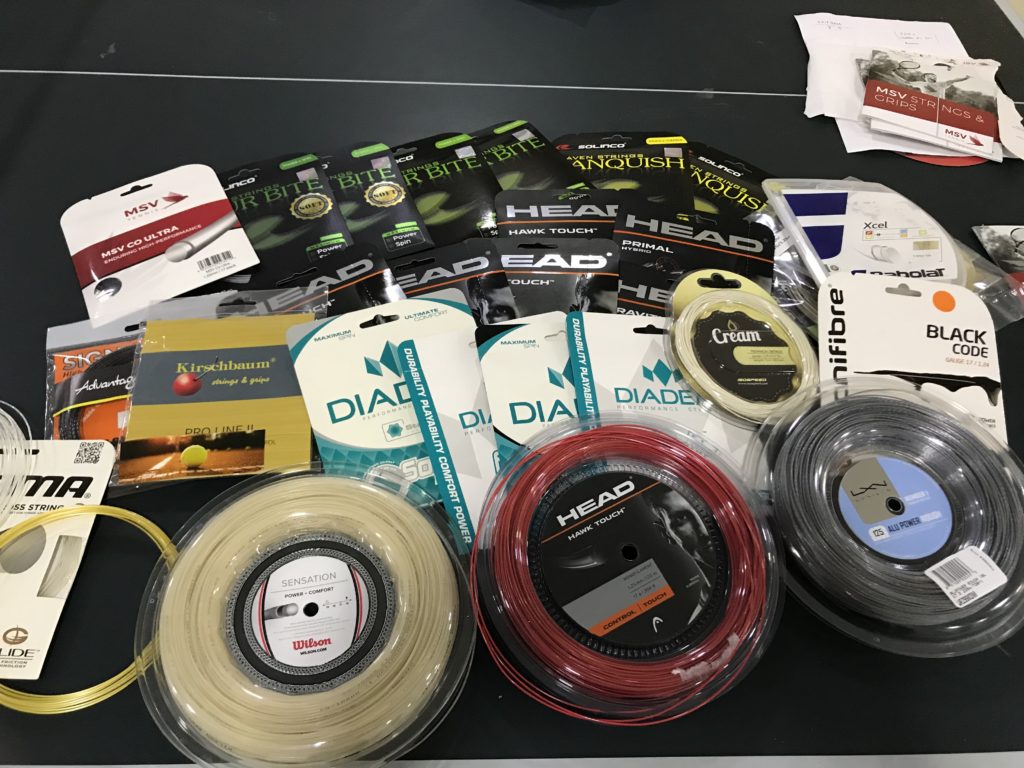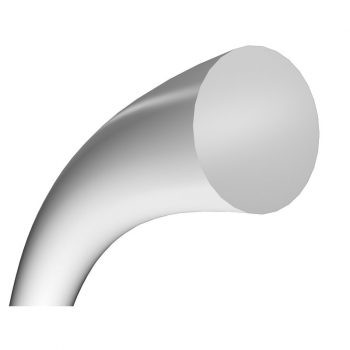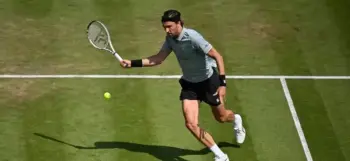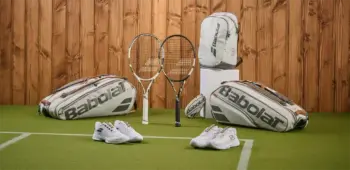The amount of strings on the market can be mindboggling. What is the difference between multifilament and poly strings?
Since the polyester string was introduced a few years before the millenium (most famously it brought Guga Kuerten to French Open victory in 1997), tennis has not been the same. Suddenly players could swing fast and hard and still have the ball land inside the lines thanks to the stiffer composition and the snapback of the strings. The transition to poly strings (so-called monofilament) from multifilament or natural gut was swift and today most pro players use poly strings. Yes, you do find plenty of hybrid setups using either two poly strings or a multi/natural gut and a poly setup. But what is the difference between multifilament and poly strings?
What is a multifilament string?
As you hear from the name, a multifilament string contains several different materials that are put together to create a softer and more powerful response. The idea is to mimic some of the properties of natural gut strings (still the best tension maintenance string out there), while cutting cost and being able to adjust the stiffness of the string in the manufacturing.
What are some characteristics of multifilament strings?
Fray quicker and offer less durability than poly/monofilament strings.
Move without snapping back into place, so needs to be pushed/pulled by your fingers in between points.
Holds tension better than polys.
Softer and more comfortable on the arm.
Offers increase in power, but decrease in control compared to poly strings.
Less spin potential than a monofilament/poly string.
More expensive than poly strings.
Does not benefit from lower tensions (difficult to control)
Lower launch angle.
What are some characteristics of poly strings?
Better durability.
Drops tension quicker than multifilament (and gut strings).
Snaps back into place after your shot for improved spin.
Offers better control.
Stiffer on the arm (less comfort).
Cheaper to make and buy.
Can be used successfully at really low tensions.
Higher launch angle.
Which string should you use?
Like with racquets, what you should use depends on many different factors. For example:
- Playing level
- Playing style
- Possible injuries
- Technique
If you use a lot of top spin for your game, polys are pretty much the only way to go. But if you’re a flatter hitter, perhaps with a more traditional technique and style, you’re absolutely fine to use a multifilament string. And if you’re not sure, why not try a hybrid setup?
Today there are slightly stiffer multifilament strings that try to bridge the gap between polyesters and multis. Such as Tecnifibre Triax, HEAD Velocity MLT or Yonex Rexis Speed to name a few more control-oriented multifilaments.
But there are also softer polyesters such as Solinco Hyper-G Soft, Volkl Cyclone Tour, and Wilson Revolve Spin to name a few. You can check out these strings at one of my affilates: Tennis Warehouse, Tennis Warehouse Europe and Tennis Only.
There is also a new softer poly string with a multifilament-style launch angle from HEAD called HEAD Lynx Touch, check out my podcast with its creator Dennis Fabian here.
What strings do you use and why?

















